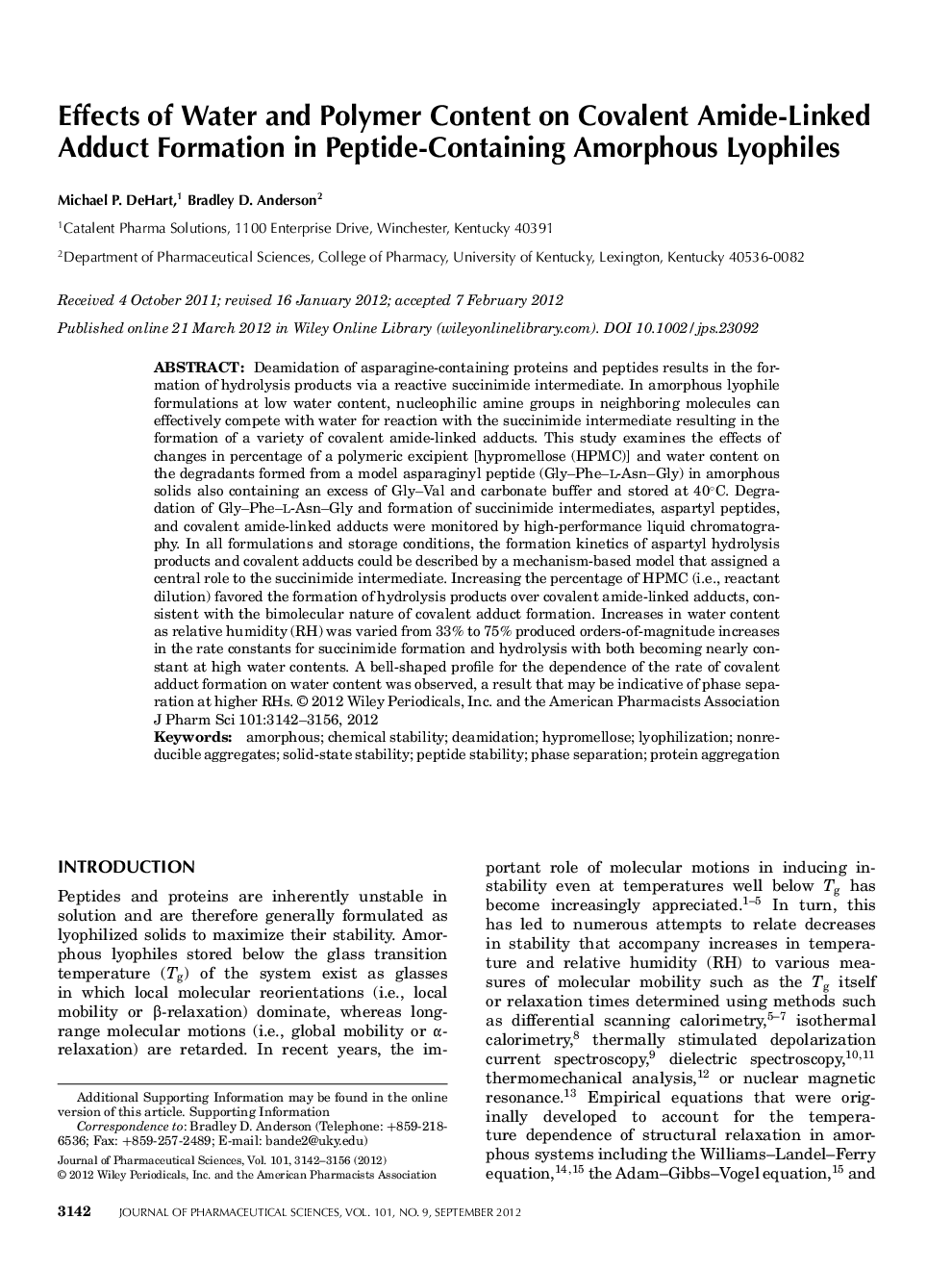| Article ID | Journal | Published Year | Pages | File Type |
|---|---|---|---|---|
| 2485938 | Journal of Pharmaceutical Sciences | 2012 | 15 Pages |
ABSTRACT:Deamidation of asparagine-containing proteins and peptides results in the formation of hydrolysis products via a reactive succinimide intermediate. In amorphous lyophile formulations at low water content, nucleophilic amine groups in neighboring molecules can effectively compete with water for reaction with the succinimide intermediate resulting in the formation of a variety of covalent amide-linked adducts. This study examines the effects of changes in percentage of a polymeric excipient [hypromellose (HPMC)] and water content on the degradants formed from a model asparaginyl peptide (Gly–Phe–l-Asn–Gly) in amorphous solids also containing an excess of Gly–Val and carbonate buffer and stored at 40°C. Degradation of Gly–Phe–l-Asn–Gly and formation of succinimide intermediates, aspartyl peptides, and covalent amide-linked adducts were monitored by high-performance liquid chromatography. In all formulations and storage conditions, the formation kinetics of aspartyl hydrolysis products and covalent adducts could be described by a mechanism-based model that assigned a central role to the succinimide intermediate. Increasing the percentage of HPMC (i.e., reactant dilution) favored the formation of hydrolysis products over covalent amide-linked adducts, consistent with the bimolecular nature of covalent adduct formation. Increases in water content as relative humidity (RH) was varied from 33% to 75% produced orders-of-magnitude increases in the rate constants for succinimide formation and hydrolysis with both becoming nearly constant at high water contents. A bell-shaped profile for the dependence of the rate of covalent adduct formation on water content was observed, a result that may be indicative of phase separation at higher RHs.
